Thermal presses from Fuchs

Thermopresses represent an important tool in the textile industry and have proven their worth over decades. Would you like to learn more about this topic? Just read on!
Our Thermal presses
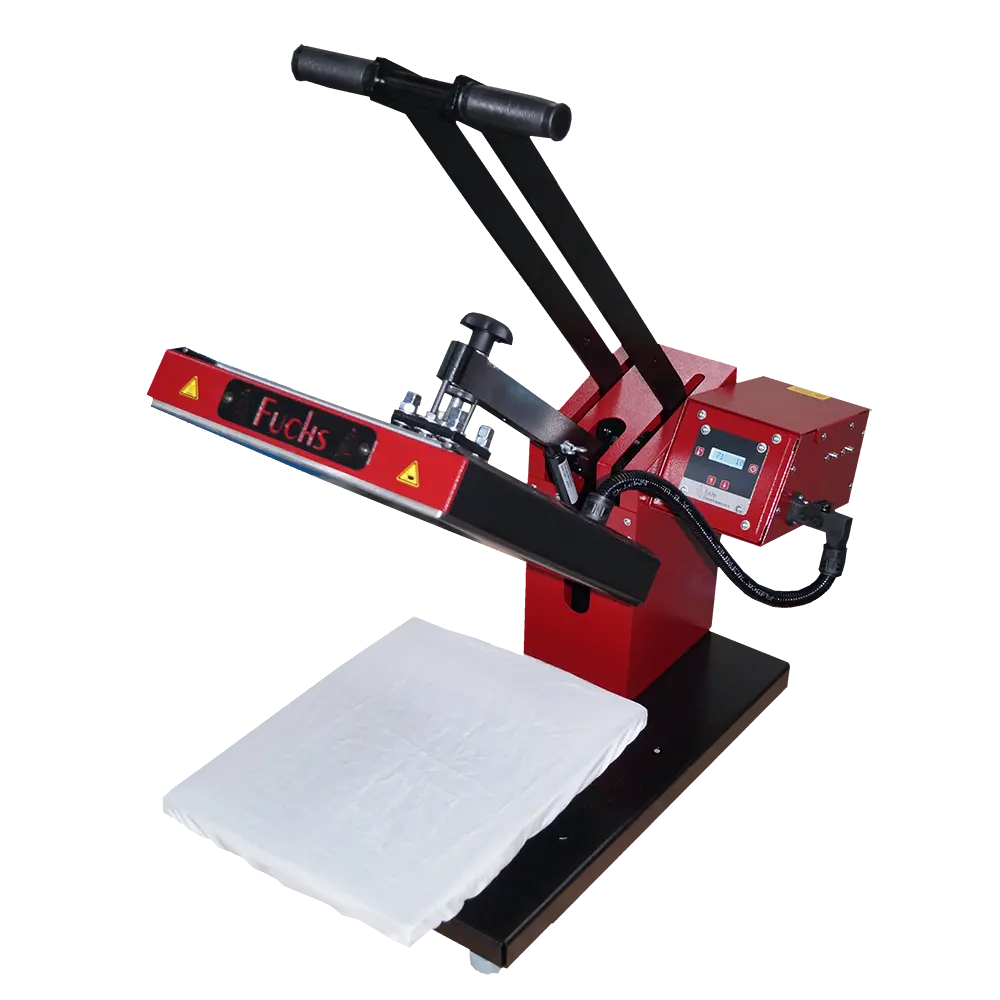
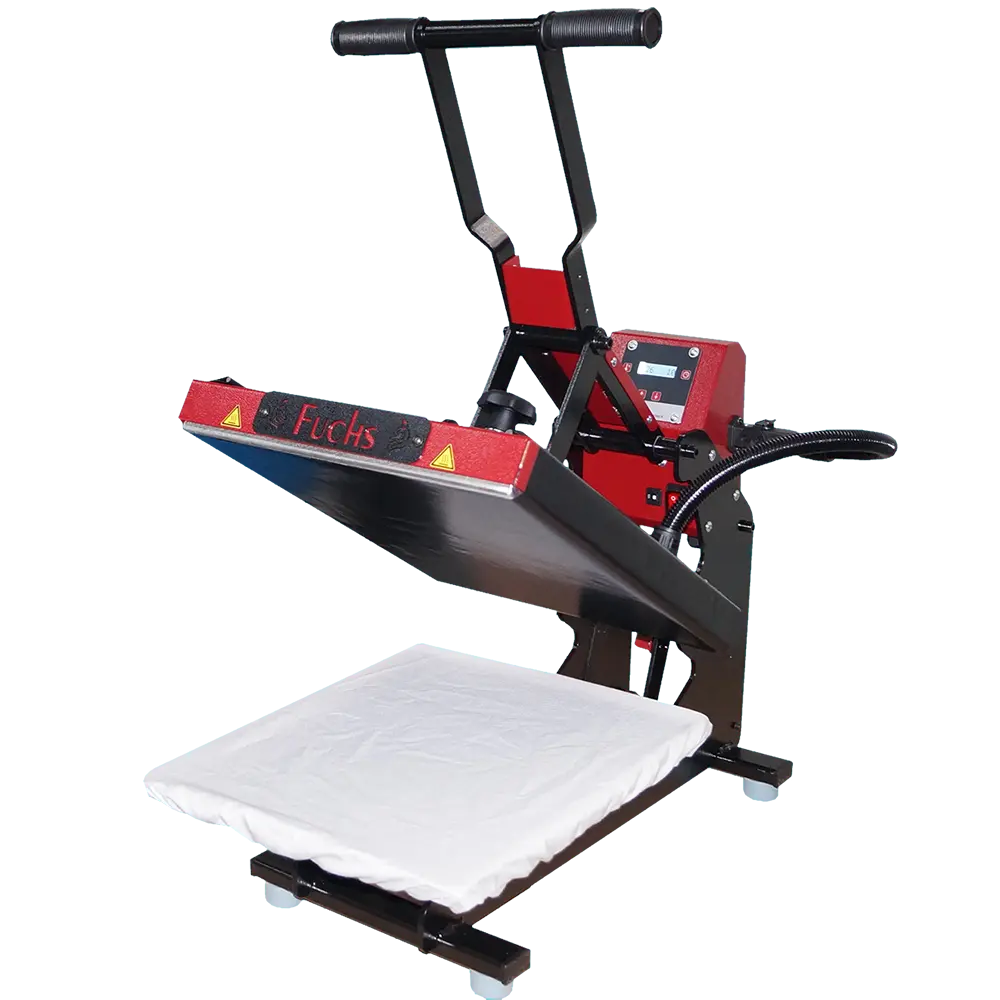
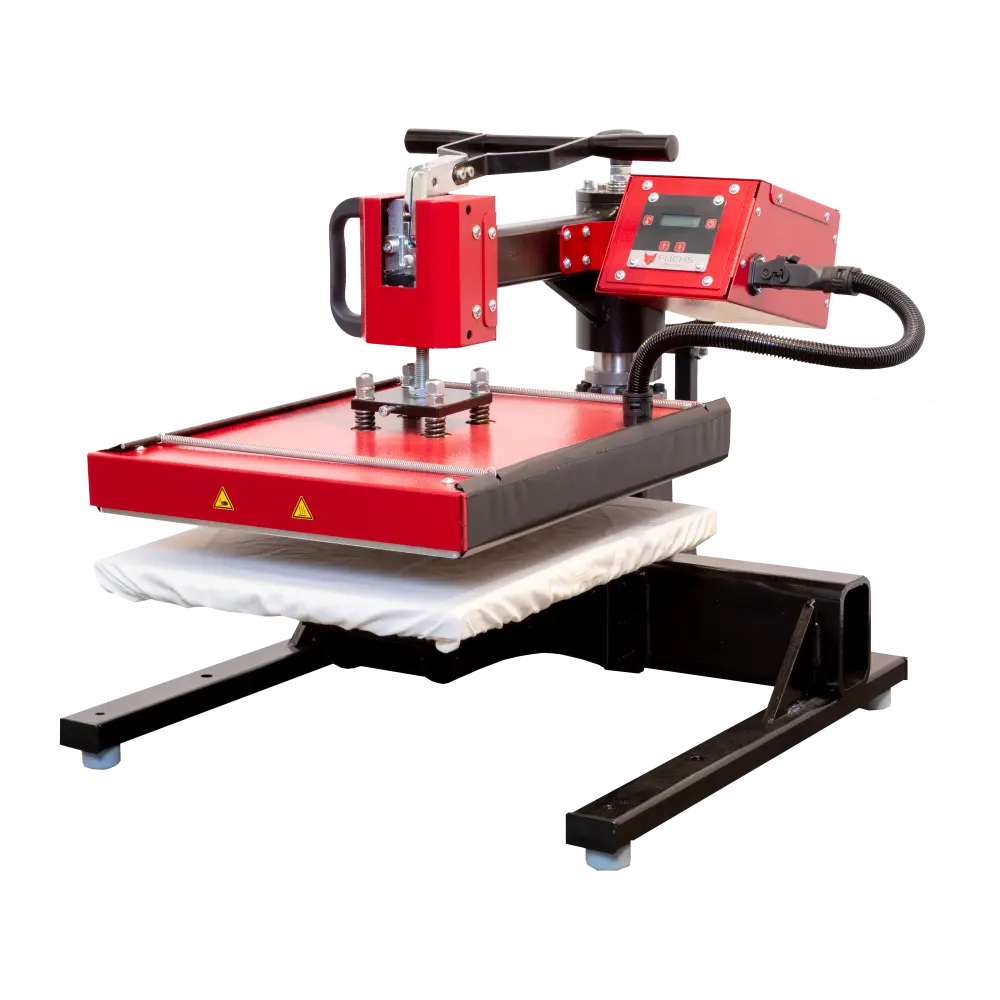
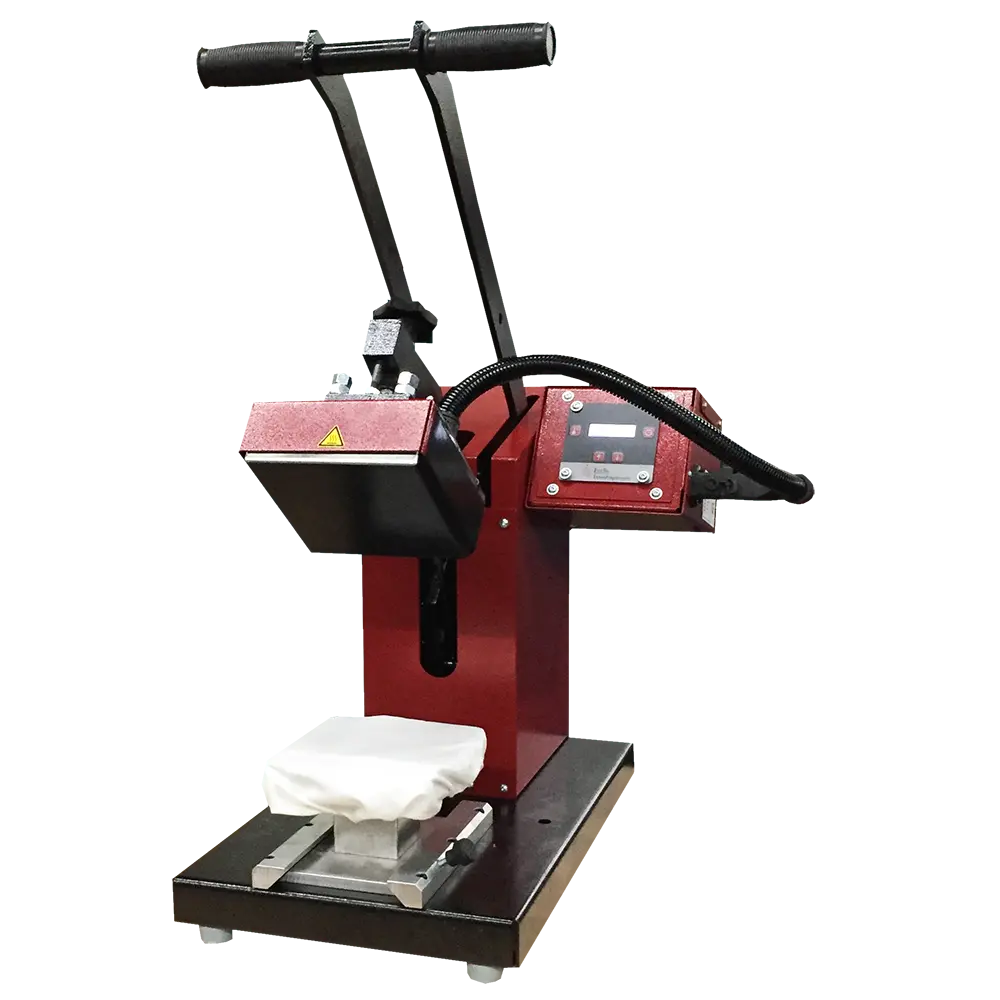
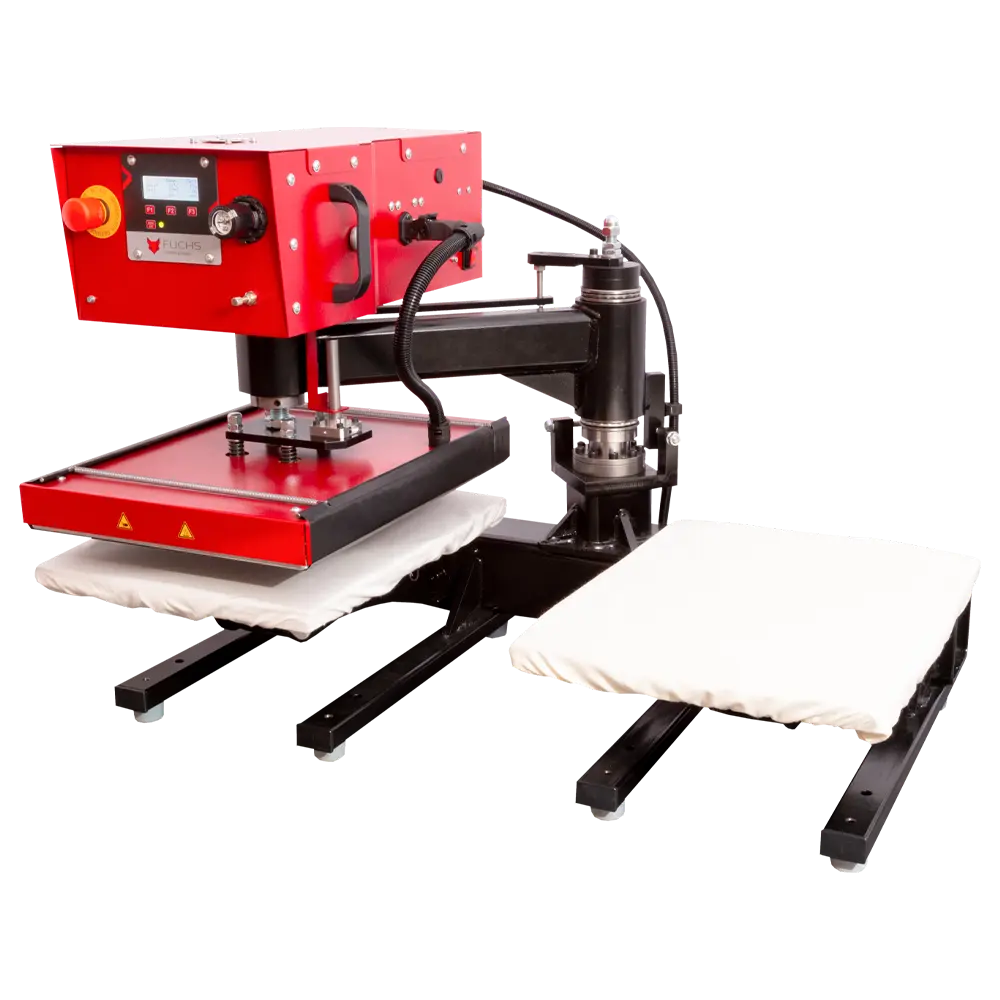
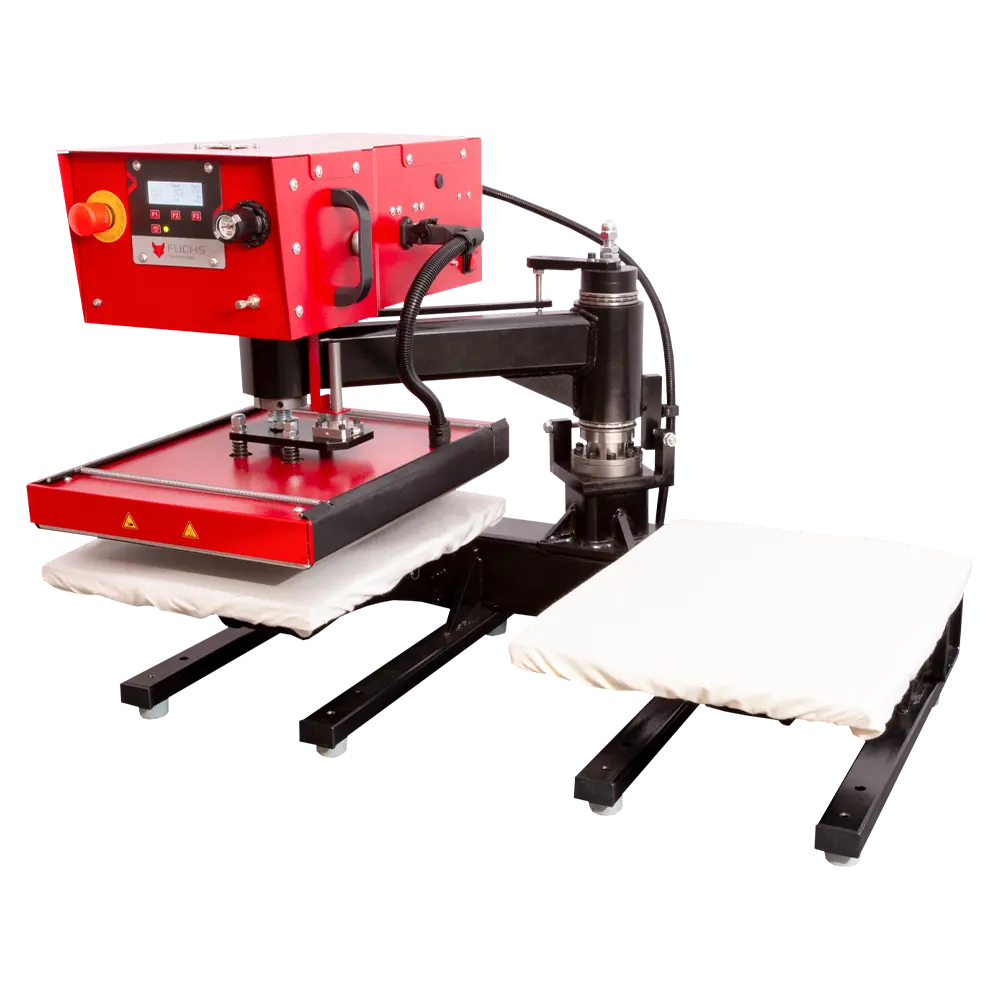
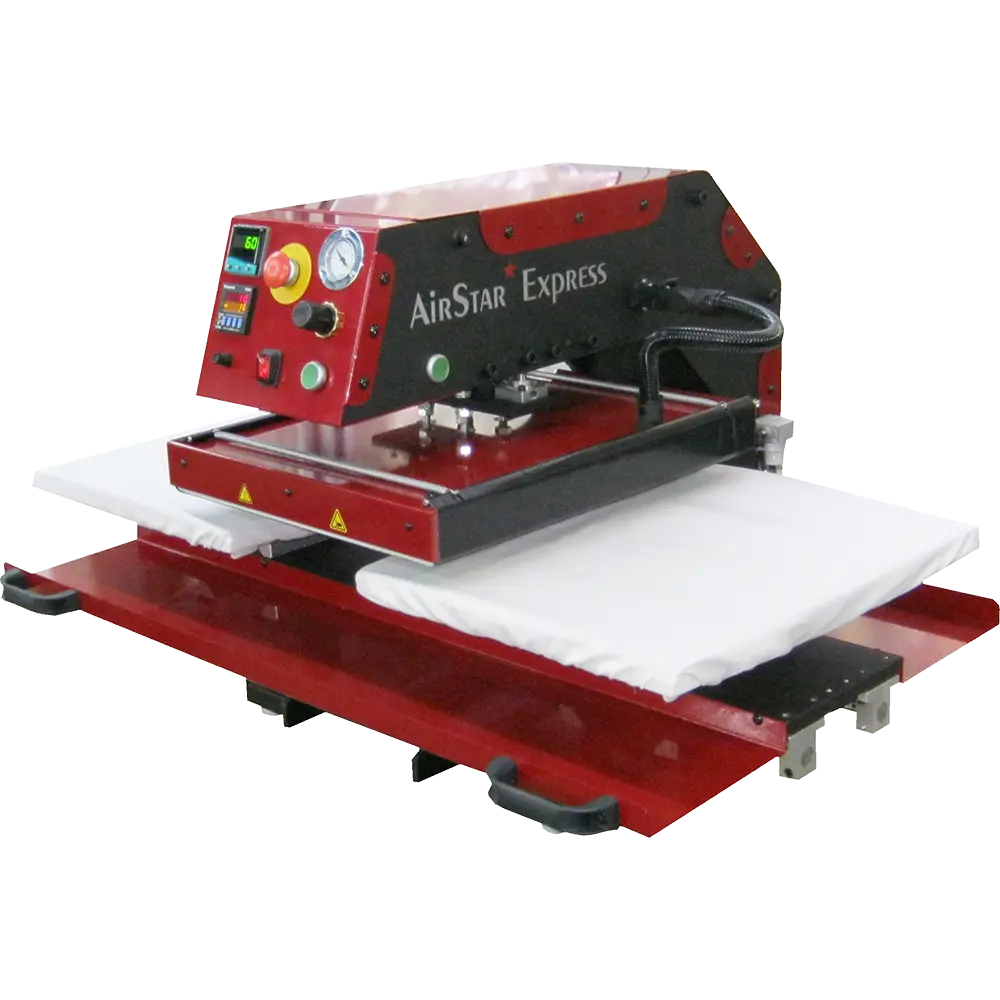
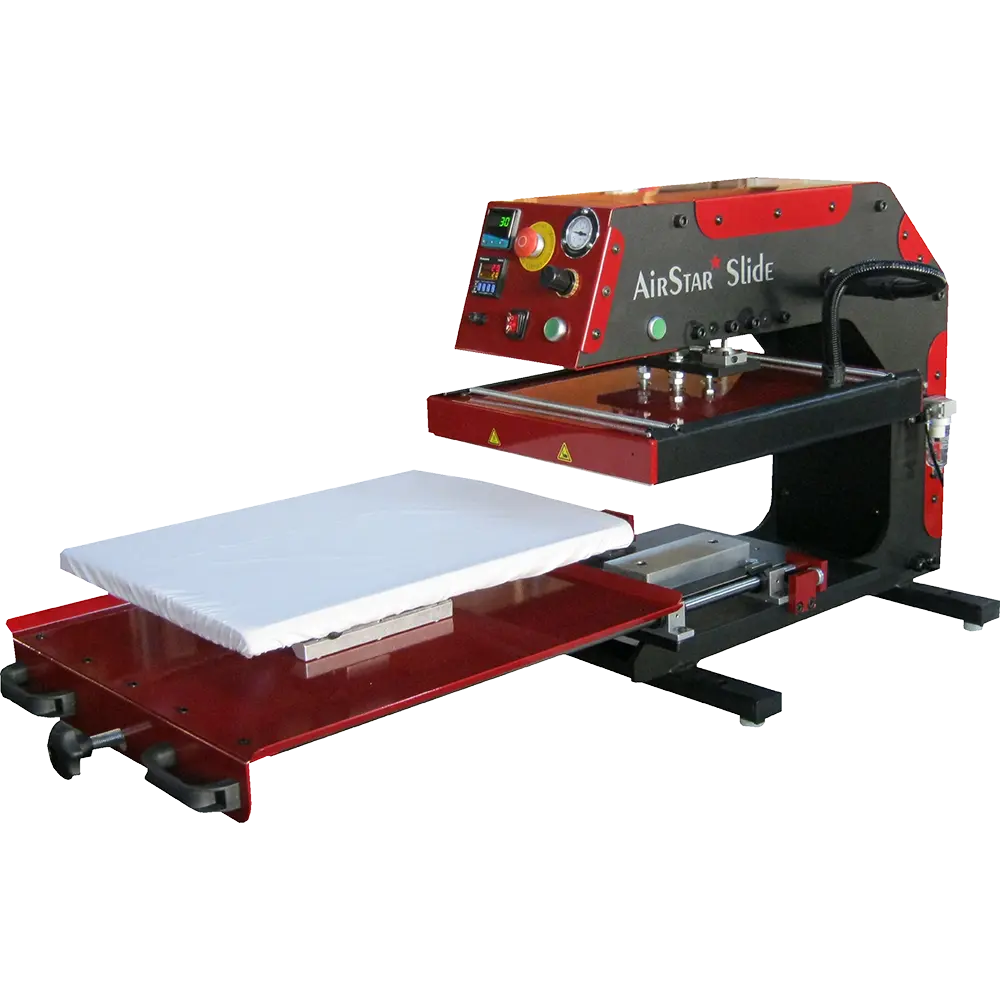
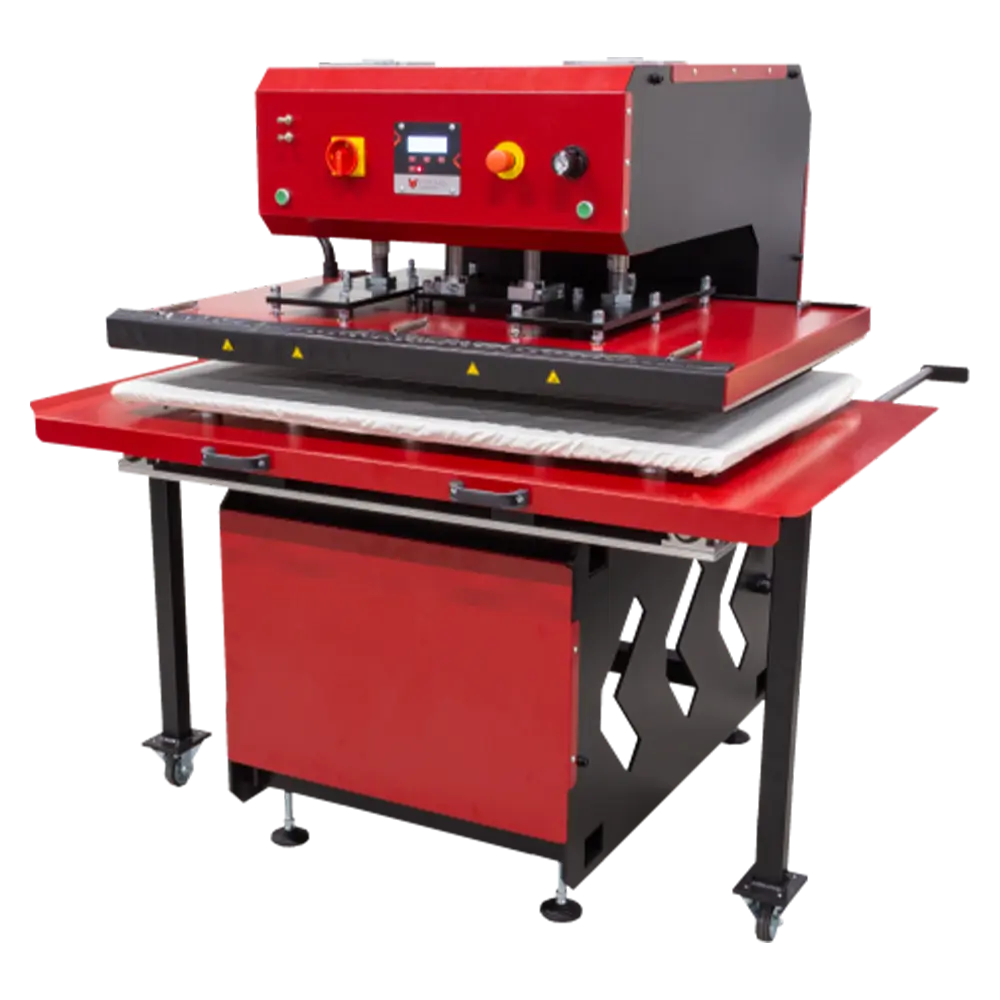
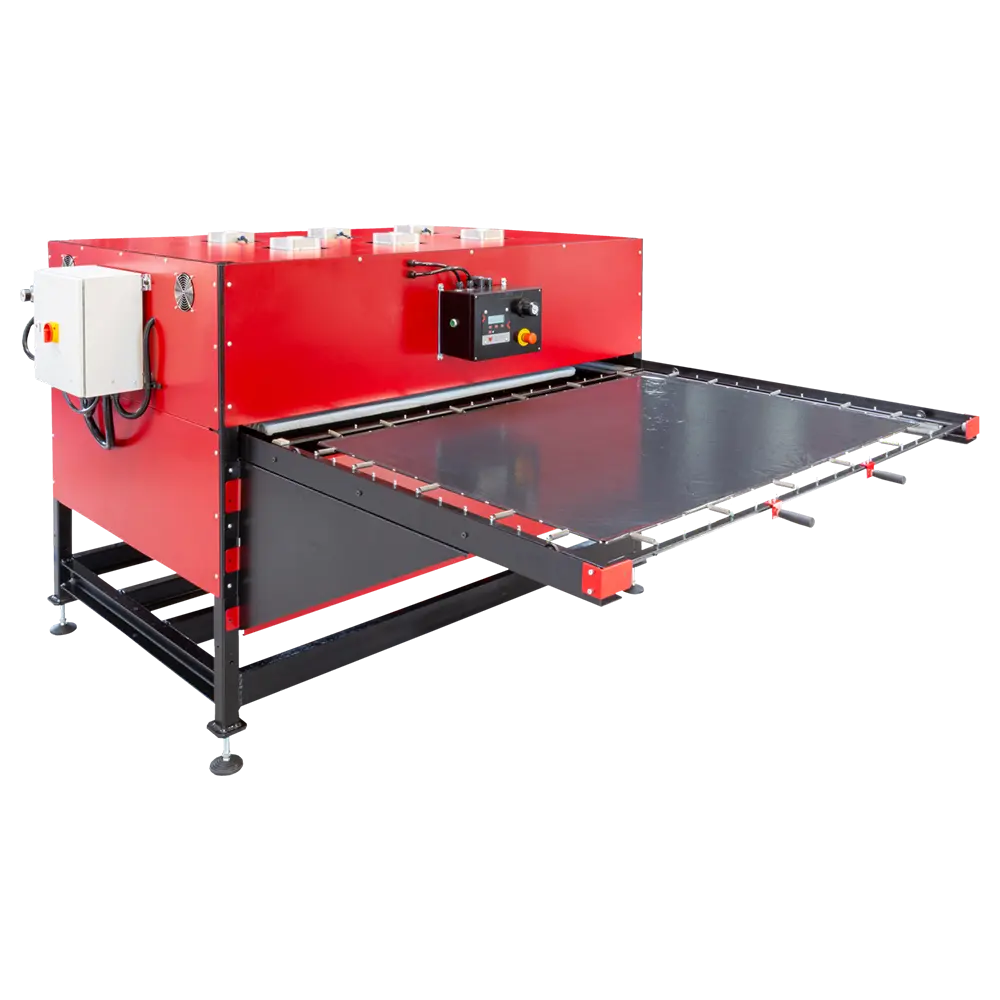
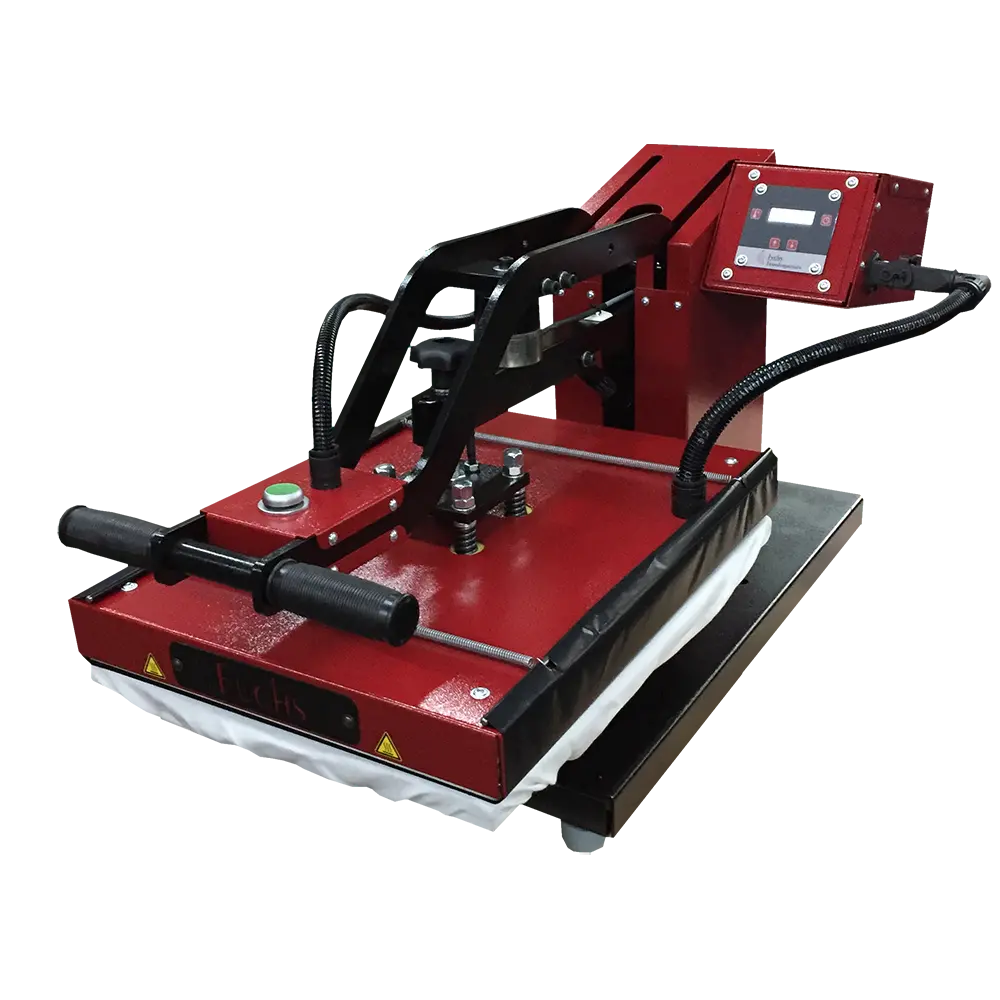
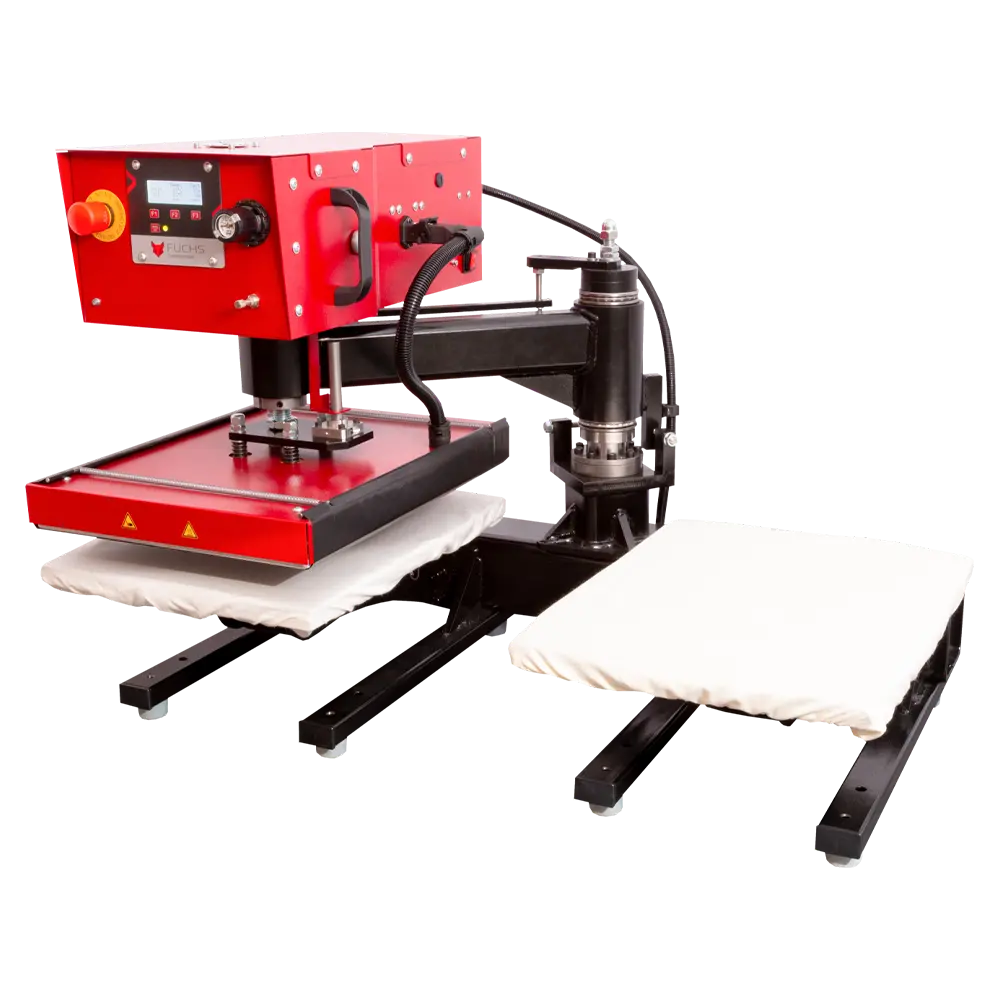
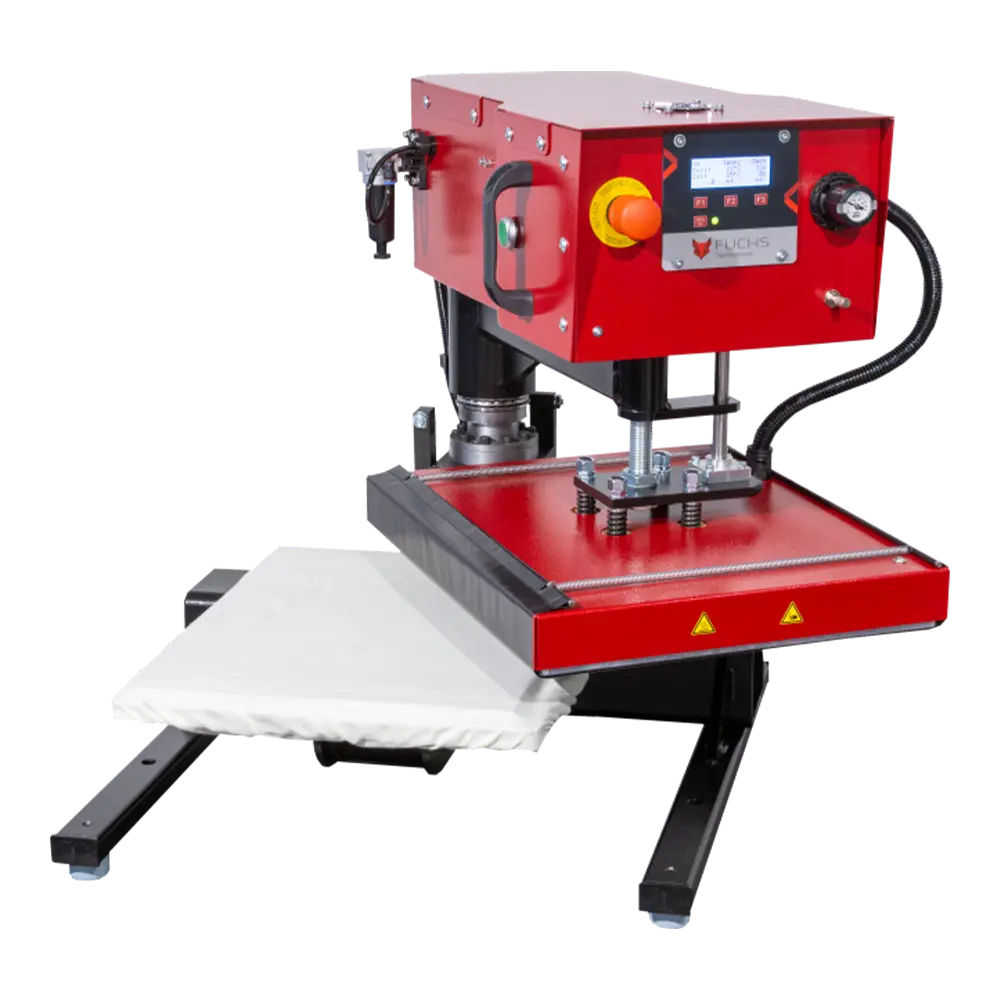
What are thermo presses used for and which processes are available?
The devices are used to join or bond different fabrics together through the use of pressure and heat. The process is used to finish textiles with images, motifs or text. There are different types of thermoprinting processes. Stain and flock foils are applied directly to the textiles by the thermo presses, while so-called transfers can also be used to produce multi-coloured motifs in small quantities. In contrast, the so-called sublimation printing process can only be used on white or light-coloured textiles, and requires a polyester content of more than 50 per cent of the specimens to be processed. This applies above all to sports textiles and functional underwear. For the sublimation printing process, a special sublimation ink is used that becomes gaseous at 185 degrees and burns into the fibres of the polyester. Any motif and colour can be selected. If desired, it can also be bonded with rhinestones; this process is usually used for jeans and T-shirts.
Functionality of thermo presses
Basically, a distinction is made between air-pressure machines and manual devices; each machine has heating up to 220 degrees Celsius as standard. Air-pressure machines work according to the pneumatic principle, have a cylinder and have a long service life. Manual machines work on the mechanical pressure-toggle principle. The question of which machine should be preferred cannot be answered in general terms; it depends on the current market situation. The temperature, time and contact pressure are specified by the manufacturer, whereby the temperature value depends on the printing method used and the material used. The manufacturer also specifies whether the motifs must cool down or can be removed while hot.
What are the differences compared to the presses of other manufacturers?
The advantages of Fuchs presses lie in the robustness of the machines, which is why the weight is also higher than that of other manufacturers. Fuchs presses are characterised by high material strength, which is reflected in low material wear. The joints are protected by special bushings. The heaters are also more voluminous than those of conventional machines because more material is used. This requires a somewhat longer heating time, as the insulating layer of aluminium is also somewhat thicker. A big advantage of Fuchs presses is that the plates store the heat better, which results in smaller temperature fluctuations. The heating time is about 15 – 20 minutes. There are also advantages when it comes to service, as contact is not made via a dealer, but the manufacturer can be contacted directly. Many cases can be clarified on the phone, and in the case of repair, the customer gets his appliance back repaired within a week, and a loan press is provided if necessary.
Consultation, delivery & assembly
The machines can be delivered in two to three weeks, the assembly can be done directly by the customer, as the machines only have to be connected to the mains. Comprehensive advice is a matter of course for us. When selecting the machines, it depends on which garments the customer wants to press, as specialising in sportswear or workwear may require the use of different machines. Pressing sports mats, for example, requires machines in special sizes. It is possible to adapt the machines individually to the customer’s requirements.
Good reasons for a heat press from Fuchs
Made in Germany
We manufacture each transfer press by hand in our production facility in Upper Bavaria. Among other things, we use our in-house turning shop to ensure the guaranteed high quality of all our presses. Hand on it.
Clever construction
Thanks to the modular design of Fuchs transfer presses, wear parts can usually be replaced by the operator without any problems. However, if a major repair is required, our specialists will carry it out for you in our workshop in a short time.
Service from the expert
Maintenance, repair or spare part needed? Because we know our machines inside out, our specialists can help quickly – without any complications! So your heat press is quickly and inexpensively ready for use again!
Directly from manufacturer
No detours. No surcharges. Full transparency. We produce our transfer presses completely ourselves. This gives us full control over quality and you also benefit from favorable manufacturer prices.
Satisfaction guarantee
Not only the reliability of our products, but also reliability in the relationship between people is a top priority for us. It is one of the cornerstones of a cooperative partnership with customers, suppliers and employees.
Download our catalog
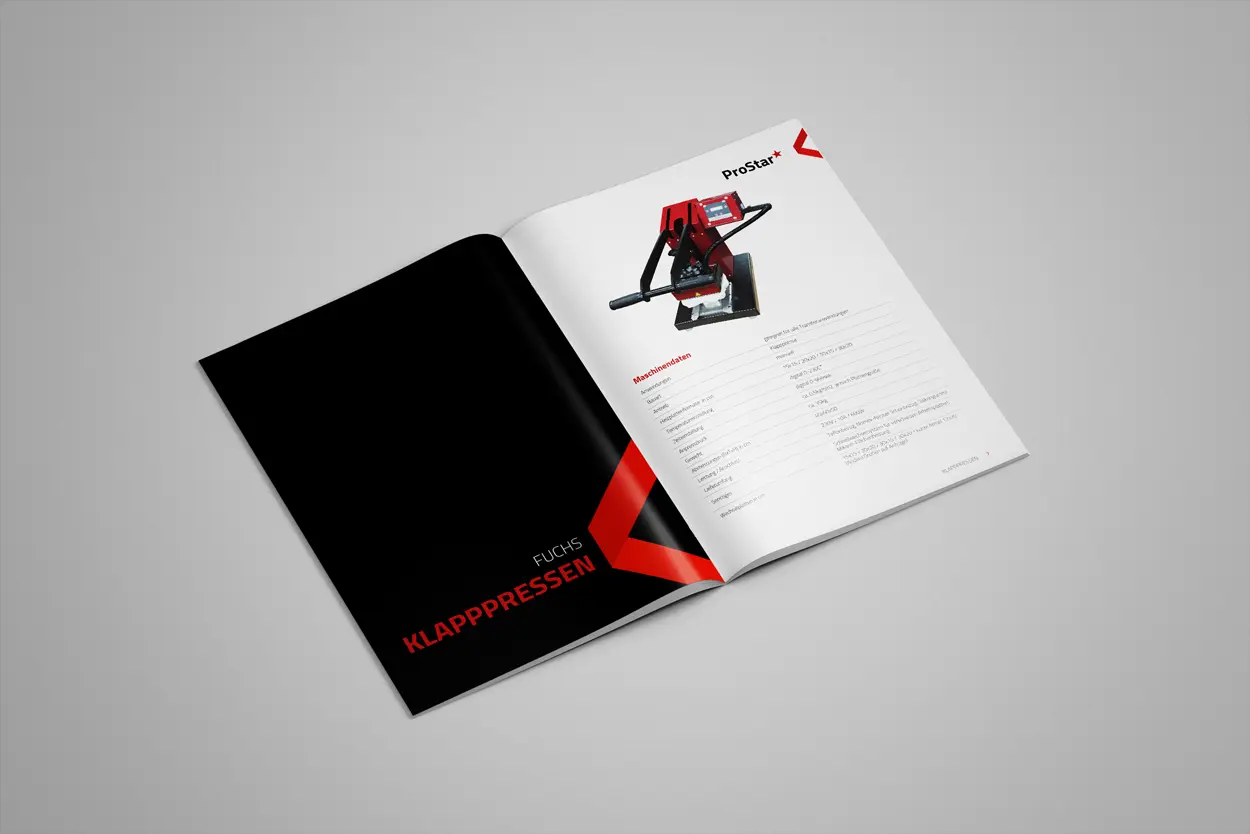
All information about our extensive range of transfer presses, plus an overview of all available extensions and accessories and of course much more information about the company and service can be found in our brand-new catalog 2023.
Download your copy and get inspired!
